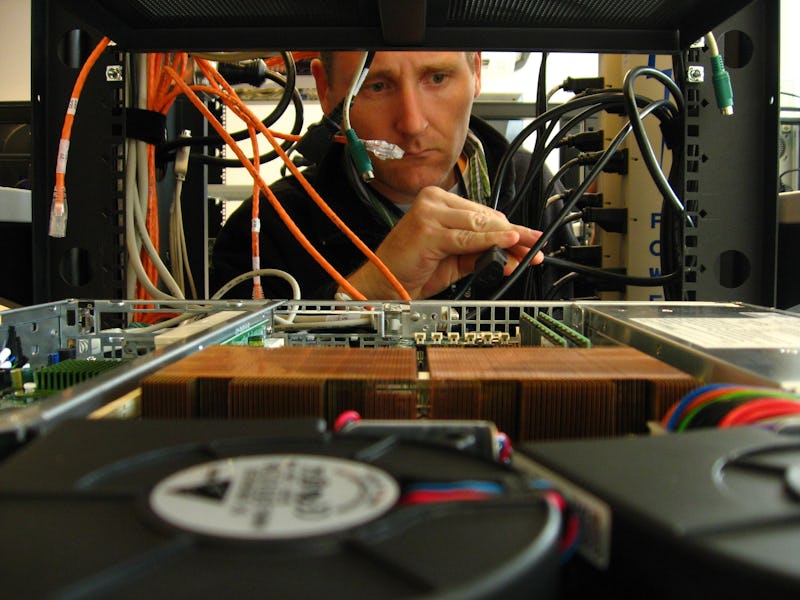DARPA Is Hacking the Peripheral Nervous System to Train American Spies
The agency hopes to train its codebreakers, polyglots, and intelligence analysts at record speed by reshaping their brains.

Training brains in the dark arts of defense — foreign languages, intelligence analysis, and cryptography — isn’t just costly but time consuming. And time is the major concern when it comes to staffing our country’s intelligence agencies. When needed, critical minds tend to be needed immediately, which is why DARPA has been trying to hack the training process. Their solution? Stimulating the body’s peripheral nerves — the ones that branch out through our extremities — to trick the brain into thinking it’s been learning.
With its Targeted Neuroplasticity Training program, DARPA’s trying to take advantage of the brain’s synaptic plasticity, its ability to continually rearrange its structures and functions in response to experiences, such as learning skills. The agency declined to give Inverse any further details on its new project but gave an overview of its paradigm-reversing research in a release.
TNT technology will be designed to safely and precisely modulate peripheral nerves to control synaptic plasticity during cognitive skill training.
Put differently, DARPA’s taking a backward approach to training the mind. Normally, it’s the brain that calls the shots, sending signals to its peripheral branches to make our extremities do and say the things we want them to. But with TNT, the signals start out in the extremities and move toward the brain in order to change its structure. The basic idea is that by stimulating certain peripheral nerves, they can trigger the release of certain molecules in the brain that cause neurons to rearrange themselves.
Which is, in a sense, all learning really is: The brain is continually rearranging its structure and functions in response to the things we do — learning being chief among them — so reinforcing those new connections through external stimuli rather than practice and repetition will, in theory, speed up how quickly the brain gets it. TNT Program Manager Doug Weber described peripheral nerve stimulation as a way of reopening the brain’s “critical period” — that is, when it’s the most open to learning.
The science presents a less invasive alternative to hacking the brain directly with electrodes, which Chinese researchers recently illustrated by engineering cyborg rats. The rats were, indeed, smarter than their A.I.-free counterparts, but they also had electrodes in their heads.
Exciting as DARPA’s project is, the research is in its infancy; in April, DARPA’s hosting a “Proposer’s Day” workshop in hopes of attracting scientists and industry reps who can help speed up the learning process.